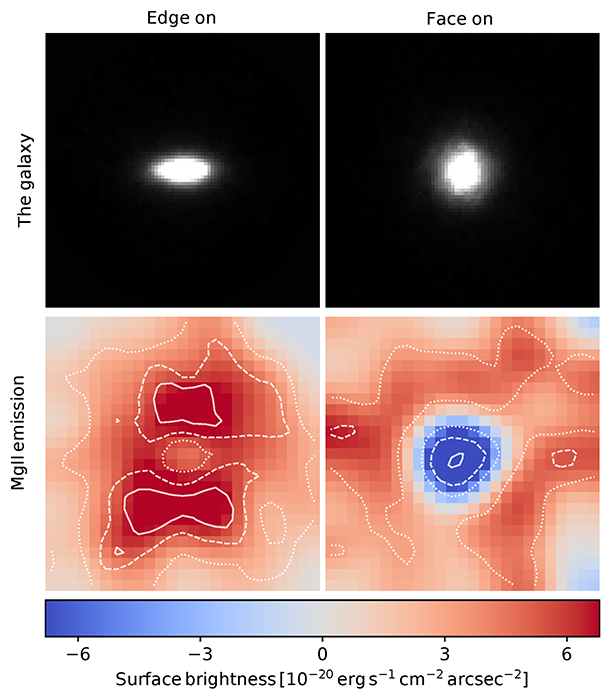
© Yucheng Guo
Galactic winds enable the exchange of matter between galaxies and their surroundings. In this way, they limit the growth of galaxies, that is, their star formation rate...
Read More

Galactic winds enable the exchange of matter between galaxies and their surroundings. In this way, they limit the growth of galaxies, that is, their star formation rate...
Read More
This is an artist’s concept of the metric expansion of space, where space (including hypothetical non-observable portions of the universe) is represented at each time by the circular sections. Note on the left the dramatic expansion (not to scale) occurring in the inflationary epoch, and at the center the expansion acceleration. The scheme is decorated with WMAP images on the left and with the representation of stars at the appropriate level of development. Credit: NASA
Scientists have created computer simulations of events soon after the Big Bang to better understand how stars today are being formed. Researchers have formed the clearest picture yet of massive explosions that controlled the creation of galaxies, including our own, and continue to influence star formation today...
Read More
The lesser-known constellation of Canes Venatici (The Hunting Dogs), is home to a variety of deep-sky objects — including this beautiful galaxy, known as NGC 4861. Astronomers are still debating on how to classify it. While its physical properties — such as mass, size and rotational velocity — indicate it to be a spiral galaxy, its appearance looks more like a comet with its dense, luminous ‘head’ and dimmer ‘tail’ trailing off. Features more fitting with a dwarf irregular galaxy. Credit: ESA/Hubble & NASA
The lesser-known constellation of Canes Venatici (The Hunting Dogs), is home to a variety of deep-sky objects – including this beautiful galaxy, known as NGC 4861. Astronomers are still debating on how to classify it...
Read More
Recent Comments